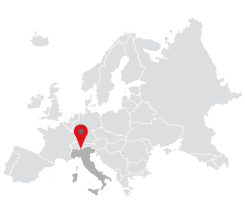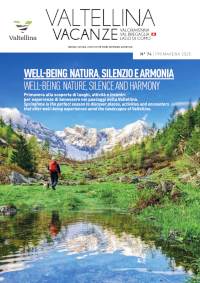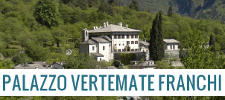In recent decades, the village of Piuro, sometimes referred to as the “Pompeii of the Alps”, buried under the landslide of 1618 along with its thousand inhabitants, is gradually re-emerging thanks to archaeological excavation campaigns. 2023 has proved a particularly productive year. Thanks in no small way to the Italian/ Swiss Association for the “digs” which has proved invaluable in the exploitation of this rich heritage. The excavations are being conducted by a group from the Department of Culture and Civilisation at the University of Verona, led by professor Fabio Saggioro.
Between October and November, at the site known today as “Cantina del Piöcc”, the site of an impressive mansion was revealed with its significant terraced garden, flowerbeds in fine masonry and a portico paved with large stone slabs. The area has been identified as belonging to the noble residence of brothers Jacob and Gio. Bavéle, already denoted in prints of the time and situated to the west of Palazzo Belfòrt. We are at the very edge of the landslide itself: Palazzo Bavéle had been entirely buried and destroyed, the nearby Palazzo Belfòrt was only partially demolished by the air displacement of the landslide which reached an estimated 160- 180 km/h.
In the accumulation of debris of the noble mansion of the brothers Bavéle, various stone elements attributable to windowsills and balconies were unearthed together with a granite column almost two metres high. In local potstone, in addition to the classic “bottoni”, two “pine cones” of remarkable workmanship were found as decorations to the fireplace. Several pieces of an internal portal in sandstone from Tuscany too, sculpted according to Renaissance styles. Among the latter, a shelf with a female face framed by flowing hair with three symmetrically positioned flowers stands out for its elegance. A particular curiosity of the palazzo Bavéle is that of the identification of rooms used as internal toilets, something very rare for the time, demonstrating forward-thinking hygiene solutions as early as 16th century Piuro. The many fragments of decorative stucco, refined flooring, the quality of the finish reserved for the bordering of the flowerbeds, demonstrate the building’s distinction. Certainly an elegant and richly furnished mansion, whose precise dimensions are still to be established and stretch much further than the modest cellar first uncovered around 60 years ago by an intrepid local going under the name of “Piöcc”. Recent explanatory panels, positioned alongside the cycle path leading to the “dig” are useful for visitors to understand better the architectural features of the site and what has become clear.





















